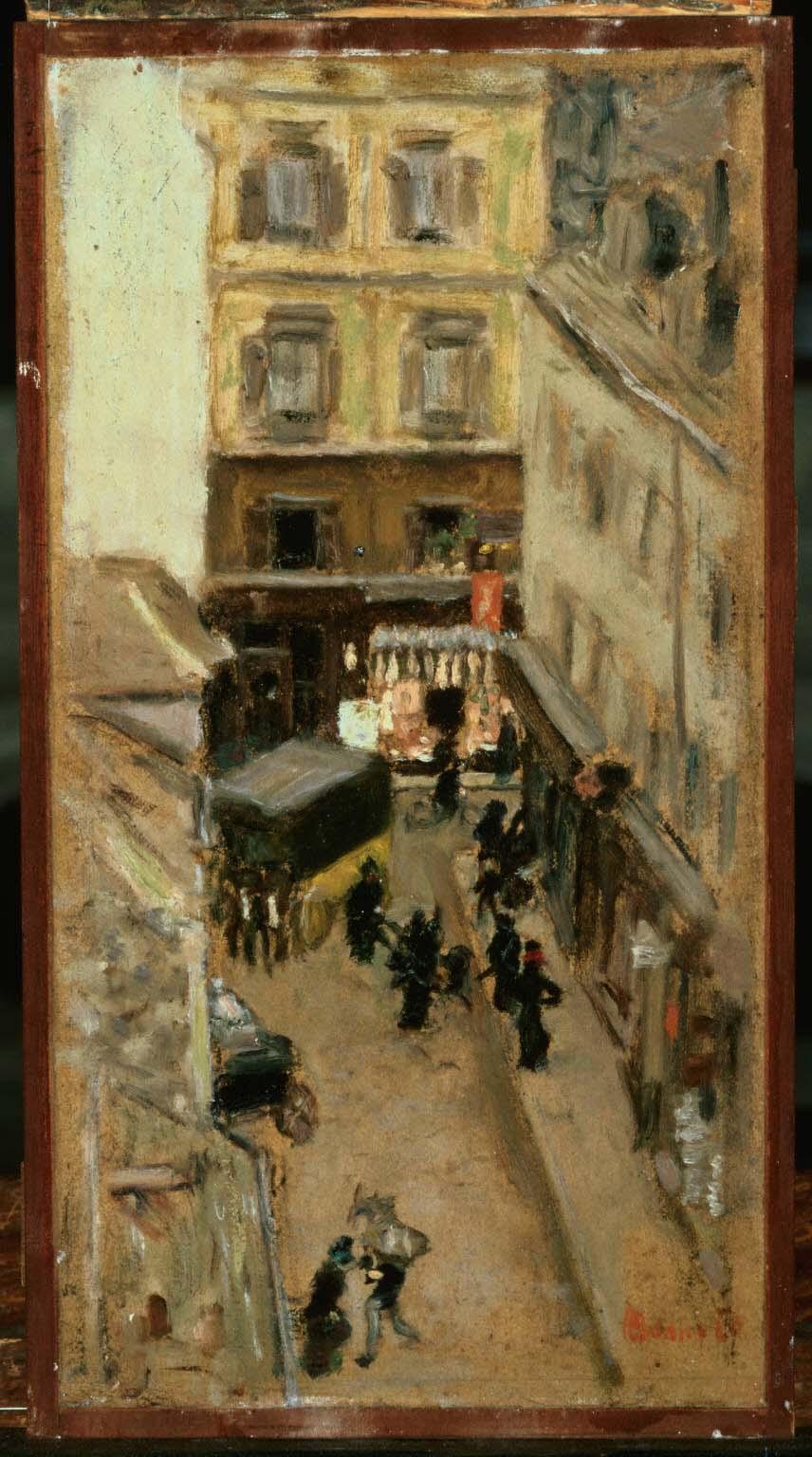Narrow Street in Paris
Pierre Bonnard ( c. 1897 )

Narrow Street in Paris recalls Gustave Geffroy’s praise for Bonnard at the time of his first solo exhibition in 1896: “No one better captures the look of the street, the colored patch seen through the Parisian mist, the passing silhouettes, a young girl’s frail grace…the evanescent faces of the street, born and vanished in an instant.” The painting depicts the view from Bonnard’s apartment high above the medieval rue Tholozé in Montmartre. The window view was to become an increasingly prominent motif for Bonnard, but in this early work he chose only to imply its presence, allowing it to dictate the image’s boundaries. The result was a detached and arbitrarily composed “slice of life.”
While seldom overtly anecdotal, Bonnard’s scenes reveal keen, often comical observation: for example, here, a vendor staggers under his load while a chic Parisienne passes him; in the background, a cyclist rides past the richly colored window of a butcher’s shop. The ironic detachment implicit in such early work recalls the instantaneous quality of photography, while the characteristic wit may owe something to the plays of Alfred Jarry and even to contemporary cartoons.
Like Degas, Monet, and Vuillard, Bonnard found inspiration in Japanese prints, a debt apparent in the high horizon, vertical format, heightened tonal contrasts, and flattening of space in the painting. Duncan Phillips appreciated the influence of Japanese prints on Bonnard’s early work; it “taught him hose to … subordinate the figure to its setting, displaying the little joys of everyday in a way purely decorative.”